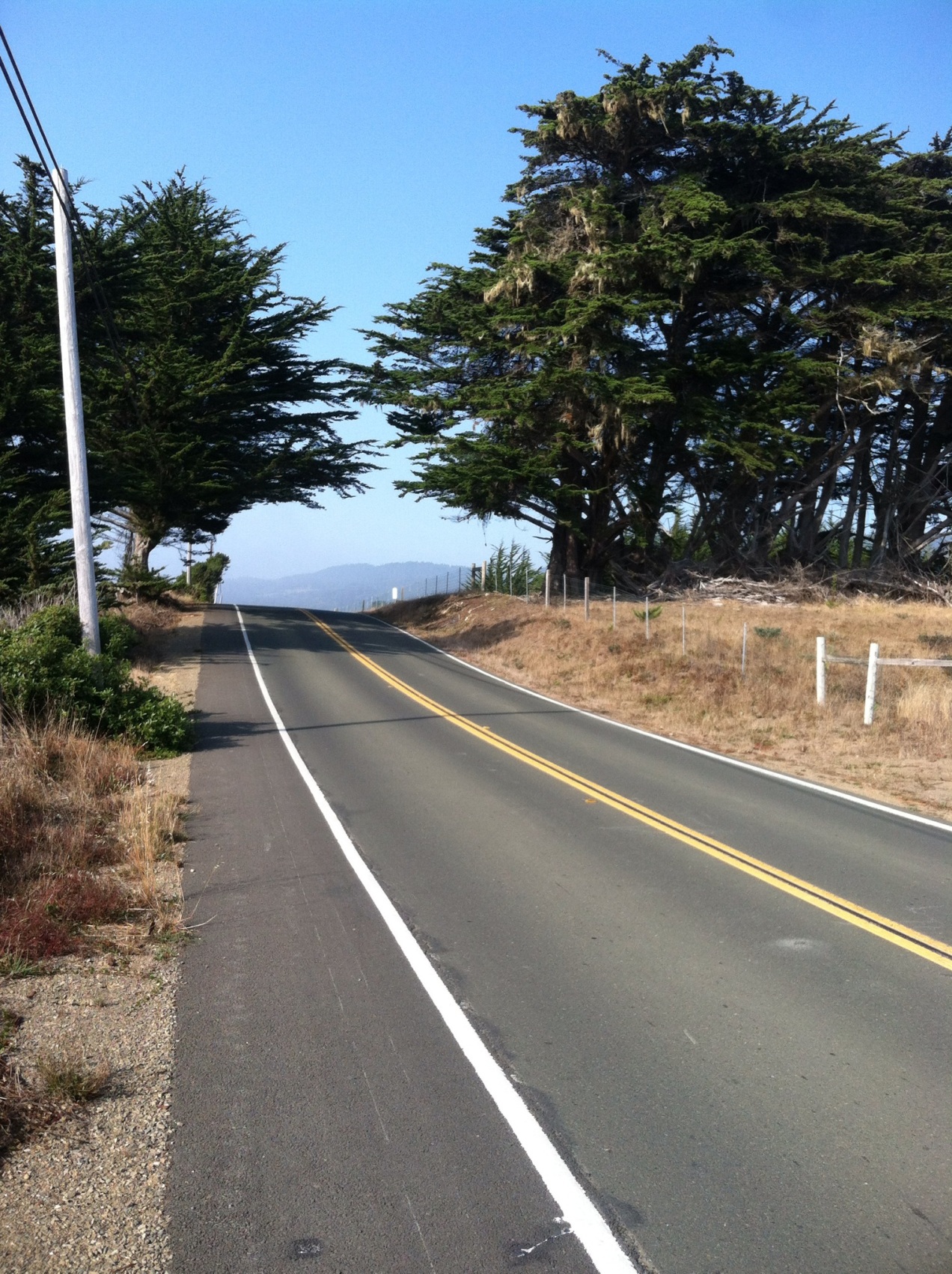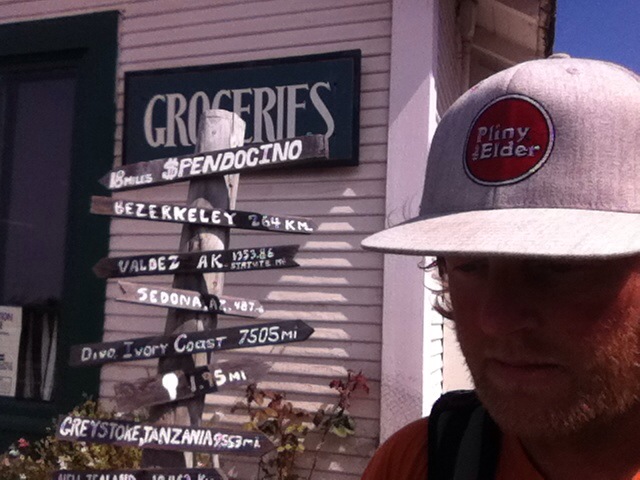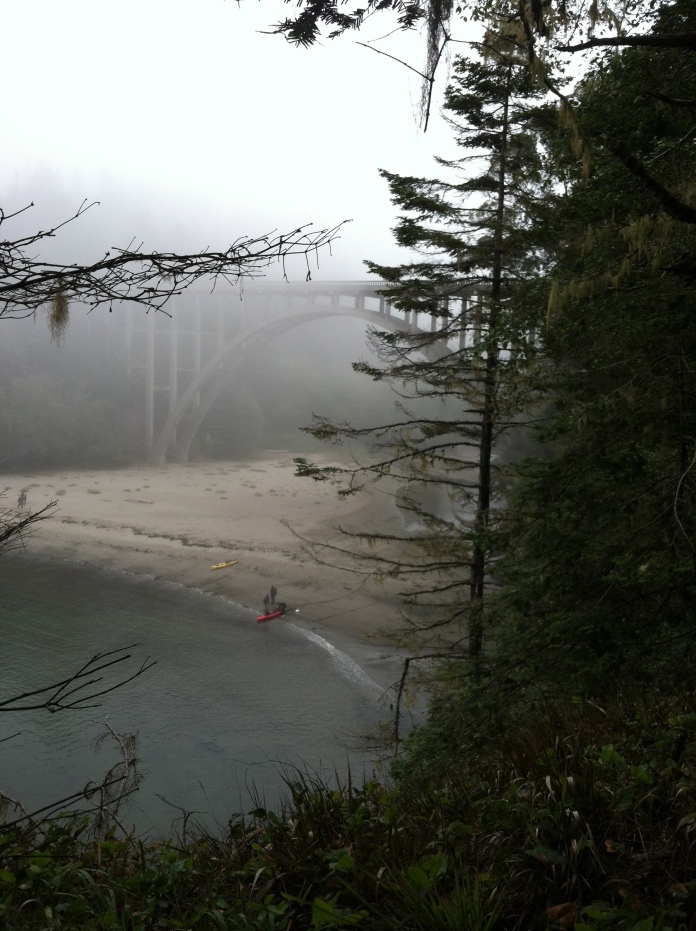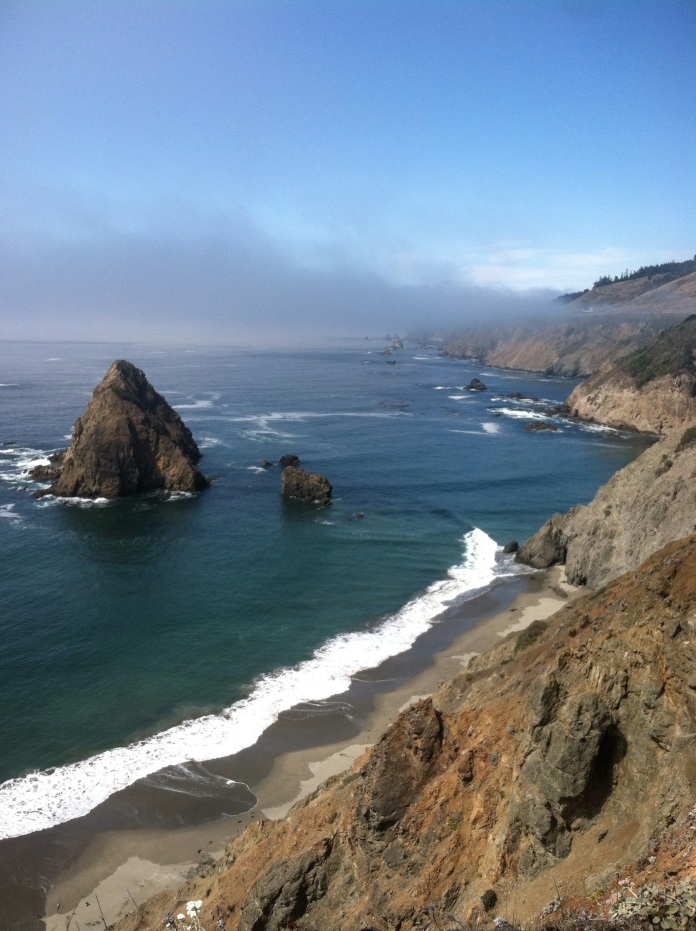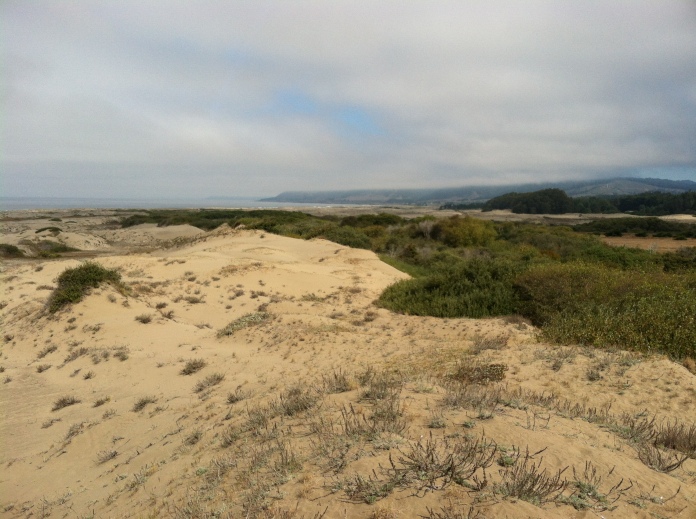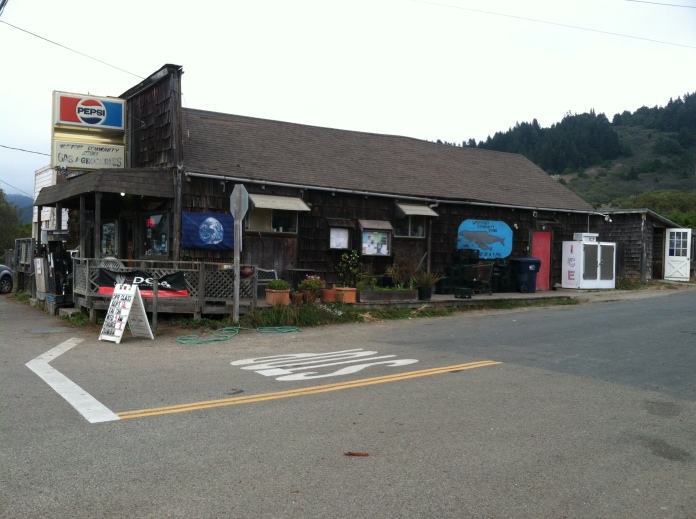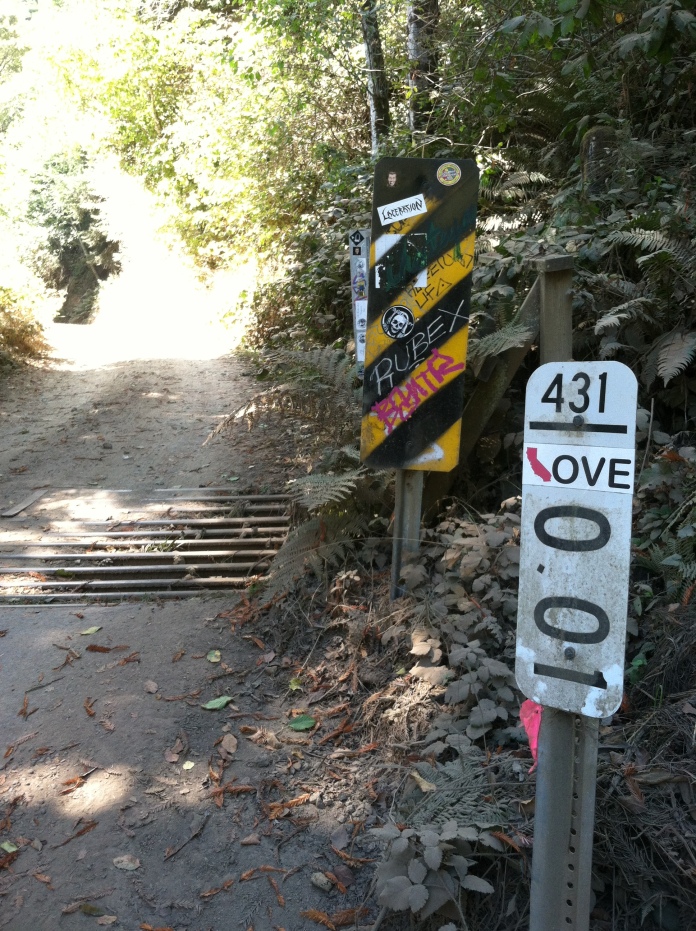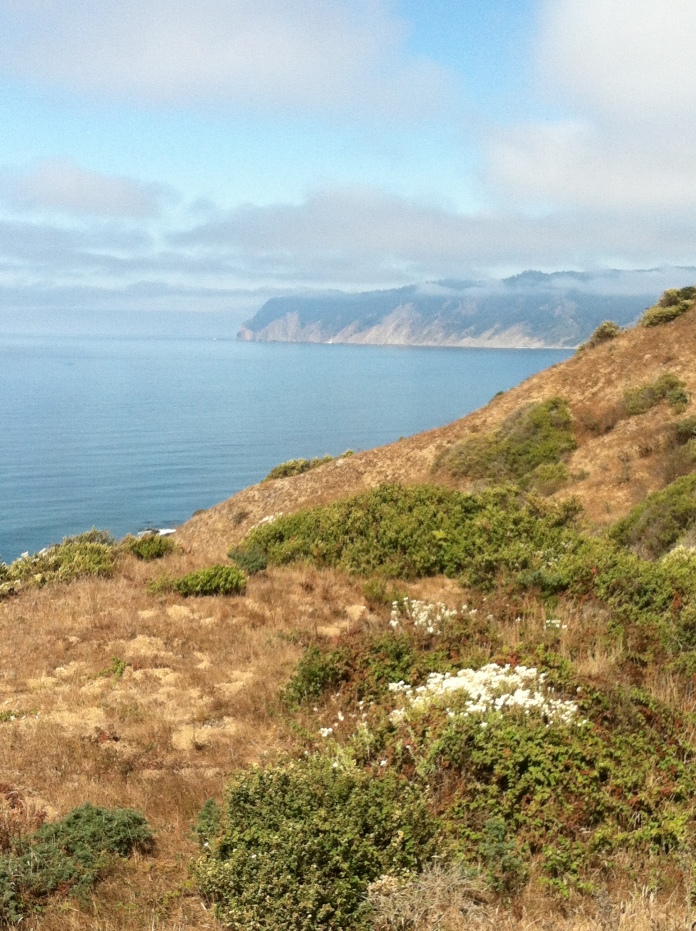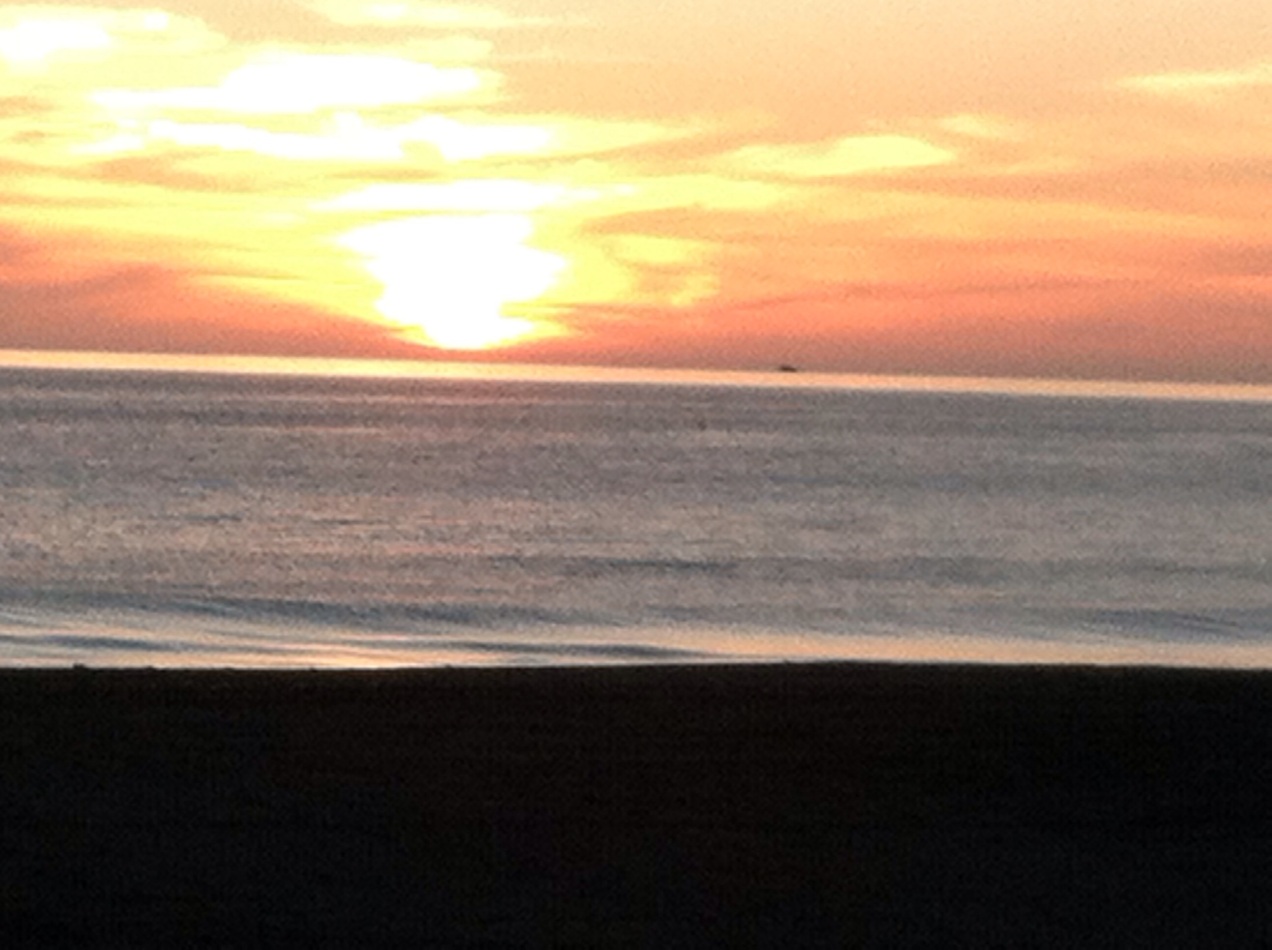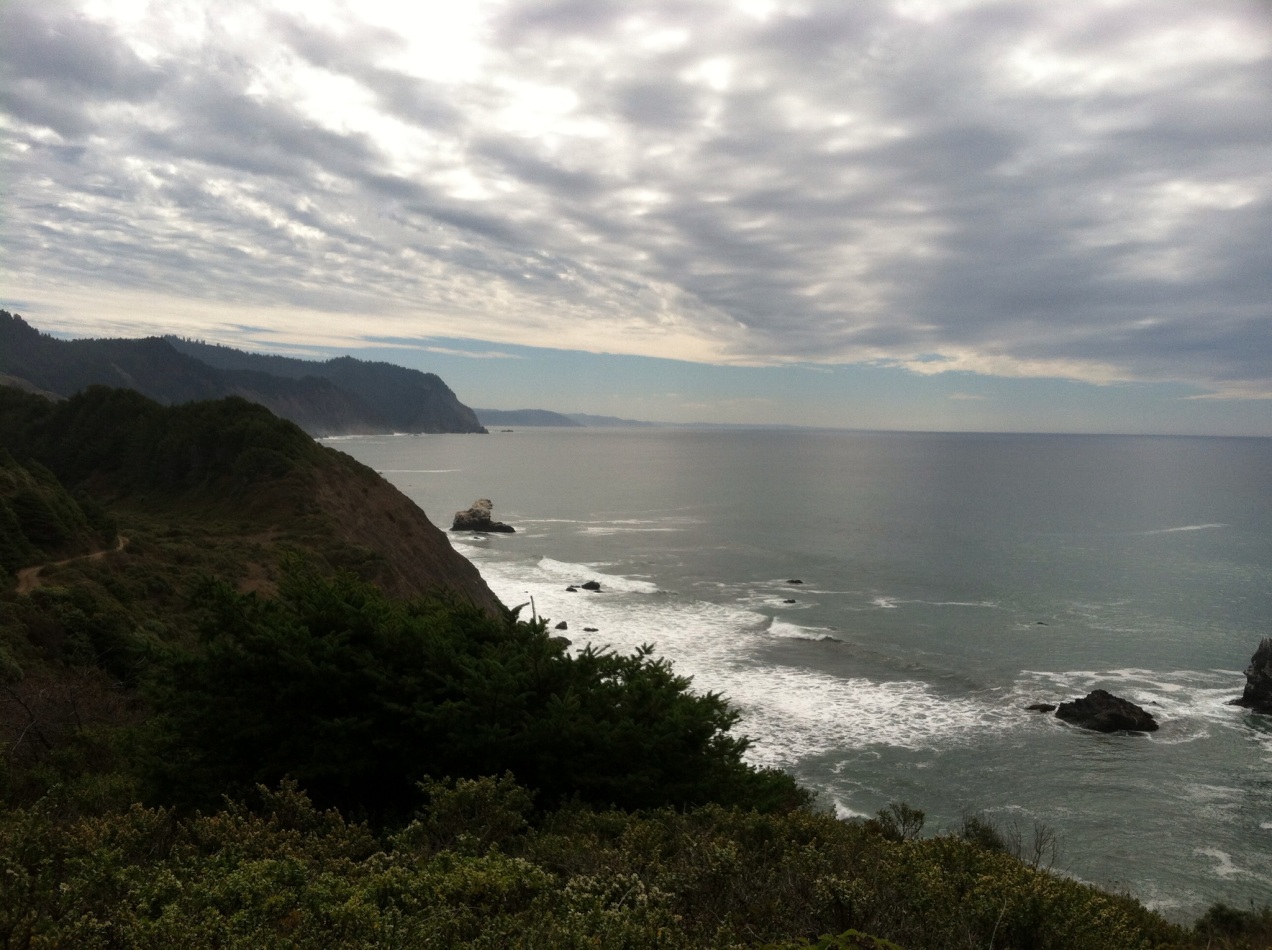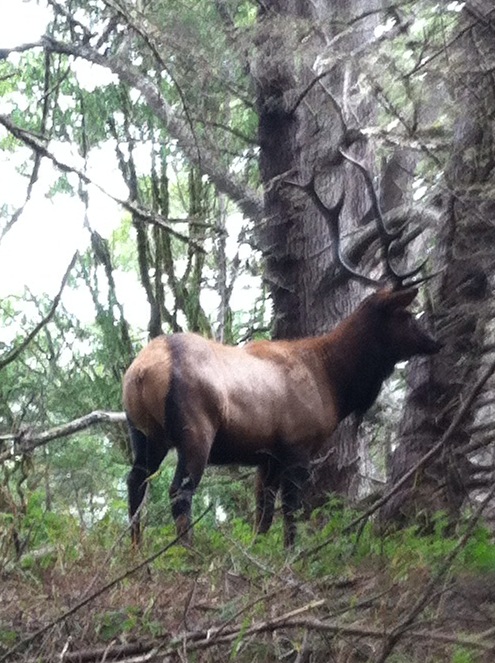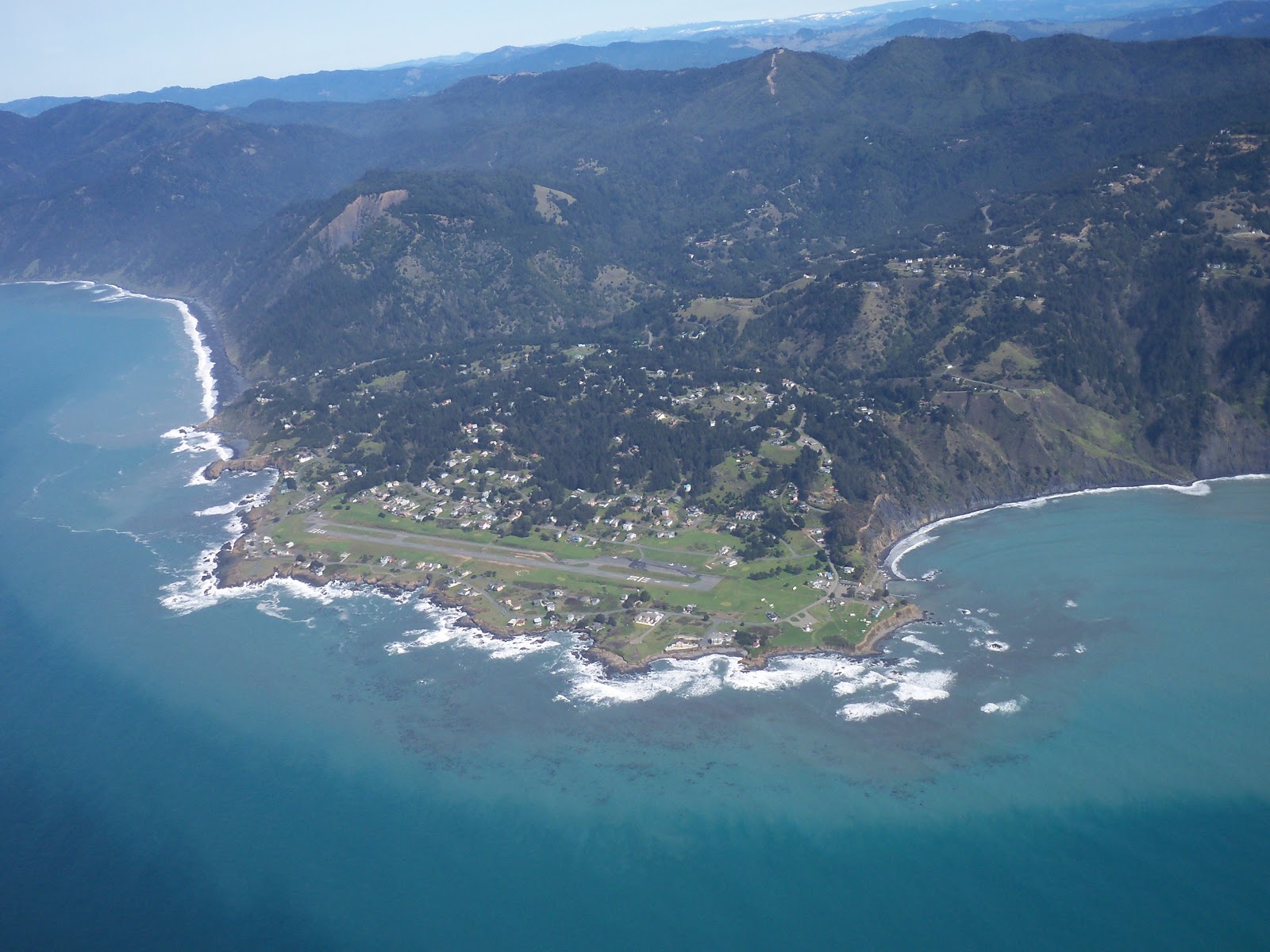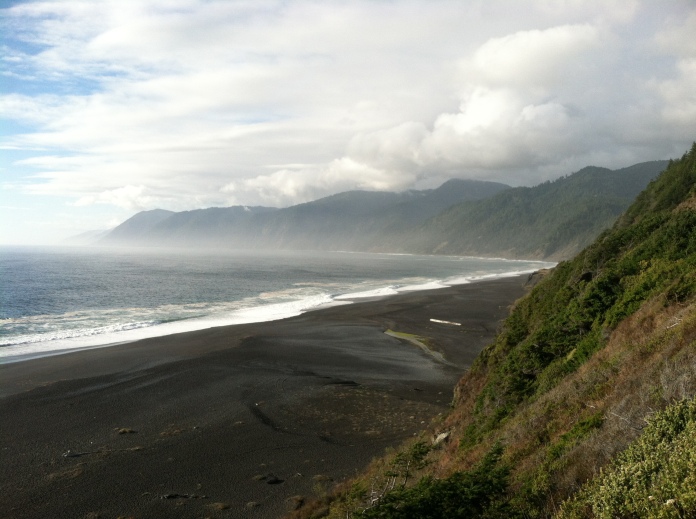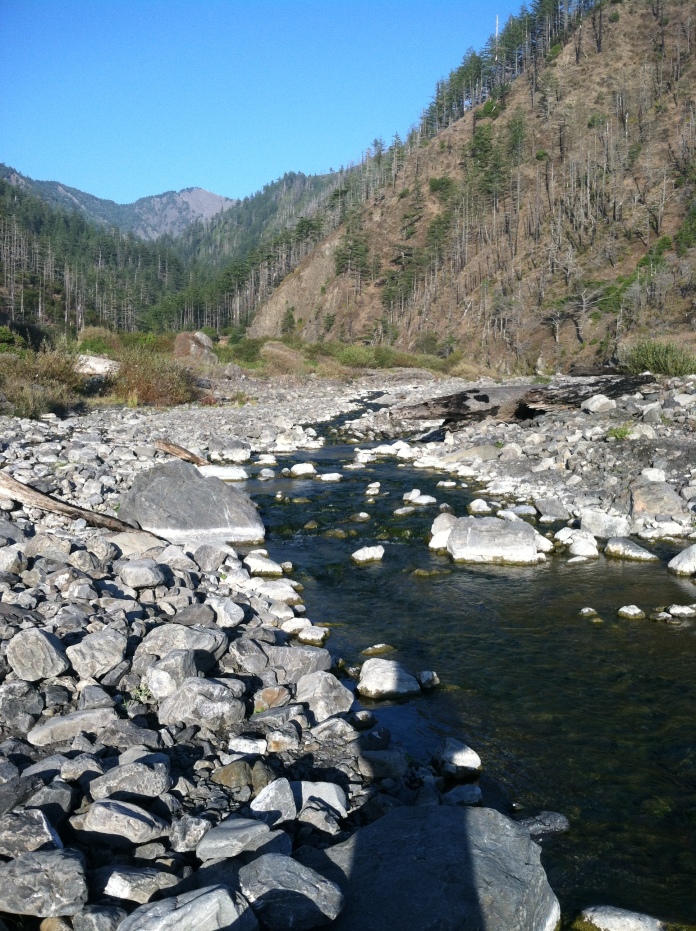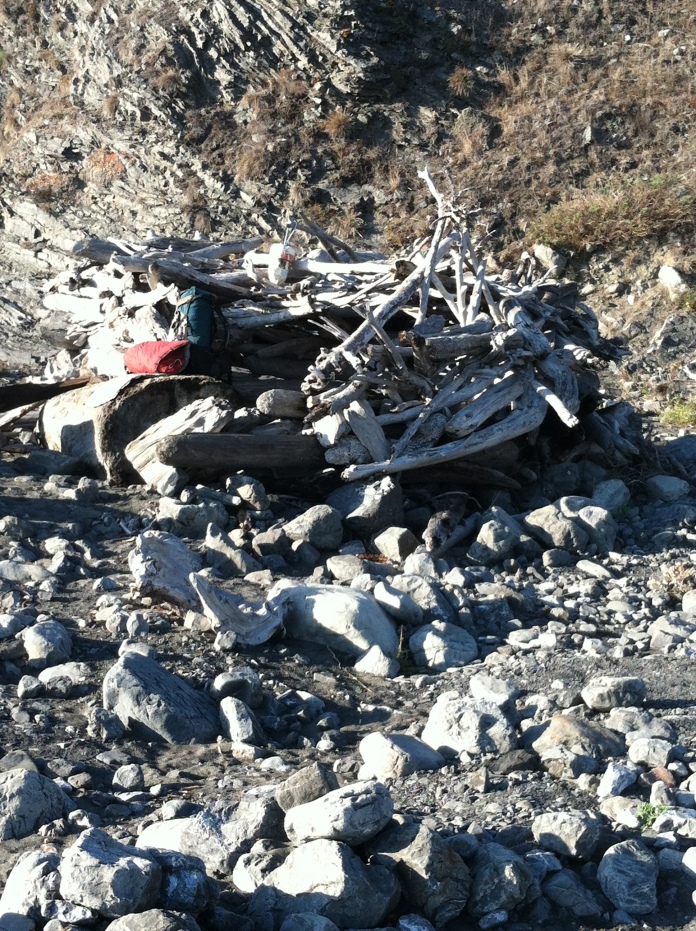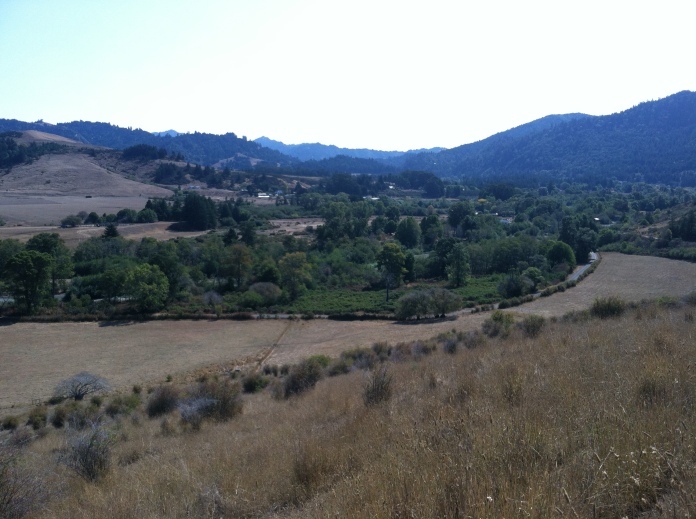- Thread starter
- #21
Little towns are distributed along California Hwy 1 North, separated from one another by 10 or 20 miles. They typically have a population of 200-500 people. Exceptions would be the town of Mendocino which boasts 900, and the bustling community of Gualala (1,700). The big city that I would reach toward the end of my road march is Fort Bragg with 7,000 people.
In the morning I crossed the Russian River. I was leaving the old colonial Spanish California and entering territory once colonized by the Russians. They say that the Russians brought communism to California. That’s always funny.
web photo Russian River crossing;

Jenner is one of my favorite little beach towns, situated overlooking the mouth of the river. I walked into a little hippy café. The bathrooms were at an unattended visitor center next door. I cleaned up a little and returned to the café. I sat down on a long bench and released my waist belt and chest clip. Inside, I went for the local eggs and bacon on pesto Focaccia bread with a sprout salad. They asked if I wanted coffee, and it smelled so good, but I had to stick with water. I plugged in my phone and went out to the wooden patio. I asked if they had wi-fi. They said no, Jenner only has lo-fi.
In every little town up and down the coast, there’s a local character. He’s kind of an eccentric, but he knows a lot of stories. The Jenner version of that guy arrived on foot, and at the same time an older Subaru pulled over onto the gravel with a paddleboard on the roof racks. The Jennerite pedestrian was an older guy wearing a felt hat. White whiskers grew from of his nostrils. His face was creased with laughing lines. He told me that the Russians used the river quite a bit. The harbor there was a little better than at Fort Ross. They built an overland trail that they used to haul cargo north to their headquarters. It’s a trail that has since disappeared in the hills above the Sonoma Coast. I would have to continue along the highway.
The Russians didn’t bring any women with them to their colonies in Alaska or California. They hired Aleuts to work for them as hunters. They employed native Californians to work as laborers around Fort Ross. Relative to the Spaniards, the Russians maintained peaceable business and social relationships with local peoples, many of whom converted to Russian Orthodoxy. With the consent of family in the motherland, and tribal leaders, many interracial marriages were consummated at Fort Ross. The offspring of these unions were called ‘Creoles’, and they soon made up a majority of children at the colony.
The Subaru in the gravel parking spot belonged to a young woman with wet hair. She had ordered coffee through the window as was sitting on the bench next to my backpack, perhaps half-listening to the Jennerite pedestrian.
The California project was supposed to be a support base for Russian interests in Alaska, where the men were weary of dining on seals and rotisserie eagle. They needed some beets and cabbages to make borscht, and maybe some cows to make the sour cream to scoop on top of that borscht. They needed some potatoes to make vodka. They needed wheat to make rye bread. Typical Russian stuff. So, they established the colony at Fort Ross. But, they ended up buying a lot more vodka than they produced and the colony never turned a profit. The sea otters were quickly harvested, along with other fur-bearing creatures. Troubles in the motherland drew attention away from the Pacific. In 1842, John Sutter bought Fort Ross and the surrounding Russian properties, right before the California gold strike. The Czar sold Alaska in 1867, before the Klondike gold strike. This was all very perplexing to the Aleuts of Alaska and the local peoples of California who wondered by what legal authority that the Russians could sell the land.
Leaving the café I bid, “Farewell, Jennerites”.
The old storyteller corrected me, “That would be ‘De-Jennerites’.”
I hoisted my pack and nodded to the paddle boarder from the Subaru.
“Don’t pick me up.” I said. “I have to walk.”
“How many times do you need to tell everyone?” She quipped. And she passed me up about an hour later, without honking, and I saw her disappear around the bend. After that, climbing up and over the hills of the Sonoma Coast, I contemplated the beauty the Subaru woman’s Russian eyes.
I visited the graveyard at Fort Ross. I walked onward to Salt Point State Park. The Pacific maintained an even calm from the cliffs to the horizon. I slept near a head-high stone with a hole through the top of it. Through the hole in the stone a beam of light from the setting sun shone upon a tree by my camp.
In the morning I crossed the Russian River. I was leaving the old colonial Spanish California and entering territory once colonized by the Russians. They say that the Russians brought communism to California. That’s always funny.
web photo Russian River crossing;

Jenner is one of my favorite little beach towns, situated overlooking the mouth of the river. I walked into a little hippy café. The bathrooms were at an unattended visitor center next door. I cleaned up a little and returned to the café. I sat down on a long bench and released my waist belt and chest clip. Inside, I went for the local eggs and bacon on pesto Focaccia bread with a sprout salad. They asked if I wanted coffee, and it smelled so good, but I had to stick with water. I plugged in my phone and went out to the wooden patio. I asked if they had wi-fi. They said no, Jenner only has lo-fi.
In every little town up and down the coast, there’s a local character. He’s kind of an eccentric, but he knows a lot of stories. The Jenner version of that guy arrived on foot, and at the same time an older Subaru pulled over onto the gravel with a paddleboard on the roof racks. The Jennerite pedestrian was an older guy wearing a felt hat. White whiskers grew from of his nostrils. His face was creased with laughing lines. He told me that the Russians used the river quite a bit. The harbor there was a little better than at Fort Ross. They built an overland trail that they used to haul cargo north to their headquarters. It’s a trail that has since disappeared in the hills above the Sonoma Coast. I would have to continue along the highway.
The Russians didn’t bring any women with them to their colonies in Alaska or California. They hired Aleuts to work for them as hunters. They employed native Californians to work as laborers around Fort Ross. Relative to the Spaniards, the Russians maintained peaceable business and social relationships with local peoples, many of whom converted to Russian Orthodoxy. With the consent of family in the motherland, and tribal leaders, many interracial marriages were consummated at Fort Ross. The offspring of these unions were called ‘Creoles’, and they soon made up a majority of children at the colony.
The Subaru in the gravel parking spot belonged to a young woman with wet hair. She had ordered coffee through the window as was sitting on the bench next to my backpack, perhaps half-listening to the Jennerite pedestrian.
The California project was supposed to be a support base for Russian interests in Alaska, where the men were weary of dining on seals and rotisserie eagle. They needed some beets and cabbages to make borscht, and maybe some cows to make the sour cream to scoop on top of that borscht. They needed some potatoes to make vodka. They needed wheat to make rye bread. Typical Russian stuff. So, they established the colony at Fort Ross. But, they ended up buying a lot more vodka than they produced and the colony never turned a profit. The sea otters were quickly harvested, along with other fur-bearing creatures. Troubles in the motherland drew attention away from the Pacific. In 1842, John Sutter bought Fort Ross and the surrounding Russian properties, right before the California gold strike. The Czar sold Alaska in 1867, before the Klondike gold strike. This was all very perplexing to the Aleuts of Alaska and the local peoples of California who wondered by what legal authority that the Russians could sell the land.
Leaving the café I bid, “Farewell, Jennerites”.
The old storyteller corrected me, “That would be ‘De-Jennerites’.”
I hoisted my pack and nodded to the paddle boarder from the Subaru.
“Don’t pick me up.” I said. “I have to walk.”
“How many times do you need to tell everyone?” She quipped. And she passed me up about an hour later, without honking, and I saw her disappear around the bend. After that, climbing up and over the hills of the Sonoma Coast, I contemplated the beauty the Subaru woman’s Russian eyes.
I visited the graveyard at Fort Ross. I walked onward to Salt Point State Park. The Pacific maintained an even calm from the cliffs to the horizon. I slept near a head-high stone with a hole through the top of it. Through the hole in the stone a beam of light from the setting sun shone upon a tree by my camp.


